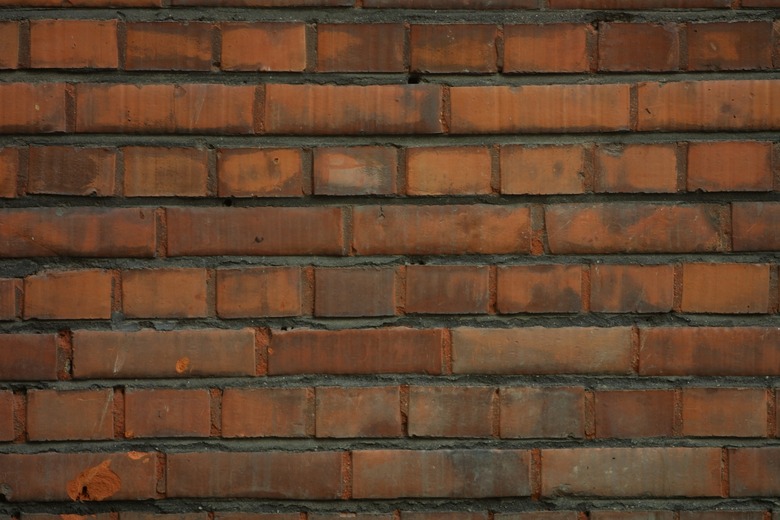How To Repair Indoor Exposed Brick Walls
Step 1
Clean out any cracks in the bricks and mortar with a small vacuum or by blowing into the cracks with pressurized air.
Step 2
Match any mortar that is repairing the face of a brick by mixing it with brick dust to create red mortar or by painting it to match the face of the brick after it has cured.
Step 3
Wet the brick thoroughly with a spray bottle filled with water and leave it for several hours. Fill the cracks by pressing mortar into them as deeply as you can with a trowel. The wet brick slows down the curing of the mortar, making it stronger.
Step 4
Replace flaking or broken mortar between bricks by clearing out old mortar with a wire brush and putty knife, then repointing with fresh mortar. Repointing is the process of refilling damaged mortar joints with new mortar. Add a recessed profile to the new mortar with a jointer, a rounded metal hand tool that you can pull along the surface of the mortar to leave a rounded surface.
Step 5
- Clean out any cracks in the bricks and mortar with a small vacuum or by blowing into the cracks with pressurized air.
- Replace flaking or broken mortar between bricks by clearing out old mortar with a wire brush and putty knife, then repointing with fresh mortar.
Step 6
Replace broken bricks that have pieces missing by chipping out the mortar around them, cleaning out the hole and replacing them. Ideally, locate bricks from the same era that are the same style, color and size as the older bricks. Replacing an old, weathered brick with a brand new brick will create a patch that doesn't look right.
Step 7
Reduce problems with flaking bricks and mortar dust by applying a clear finish to the surface of the wall. Test any finish on a brick wall in an inconspicuous place first to be sure you like the resulting color and sheen.
